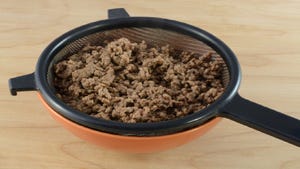Indiana agriculture is definitely not one world this spring and early summer. The northern half of the state, more or less, got a jump on the south in planting date, even though it may have been later than they normally plant. The south is catching up between showers.
That's not the only observation that makes things different this year. Some people are no-tilling into bean stubble, some are no-tilling into cover crops, standing or burned down, and some are working soil and planting into bug-dust. That assumes it was dry enough to form 'bug dust.'
Little residue: As if you need a reminder, fields that looked like this last summer didn't leave much residue behind to be worked up this spring.
It looked like the 1970s in some fields where the soil worked up very fine. Hopefully big rains won't lead to lots of soil erosion that makes lakes and streams look like it's 1970 all over again too.
Why did the soils work up so fine where farmers made two to three trips before planting? Even some who made trips with so-called vertical tillage tools wound up planting into very fine soil. One theory is that in many areas, there was so little residue produced last year by the sub-par corn crop during the drought that there was little to stand in the way of working the soil into fine powder.
The other issue is that in many of those stressed fields, the stalks that were there were affected by stress and disease disintegrated by harvest. So they provided little for the field cultivator or even vertical tillage tool to encounter this spring.
What's uncertain is if these soils will crust if there are strong rains on top of them. If that happens, soybean emergence might be a problem. Soybean emergence has also been a problem in no-till fields that were planted too wet.
About the Author(s)
You May Also Like




